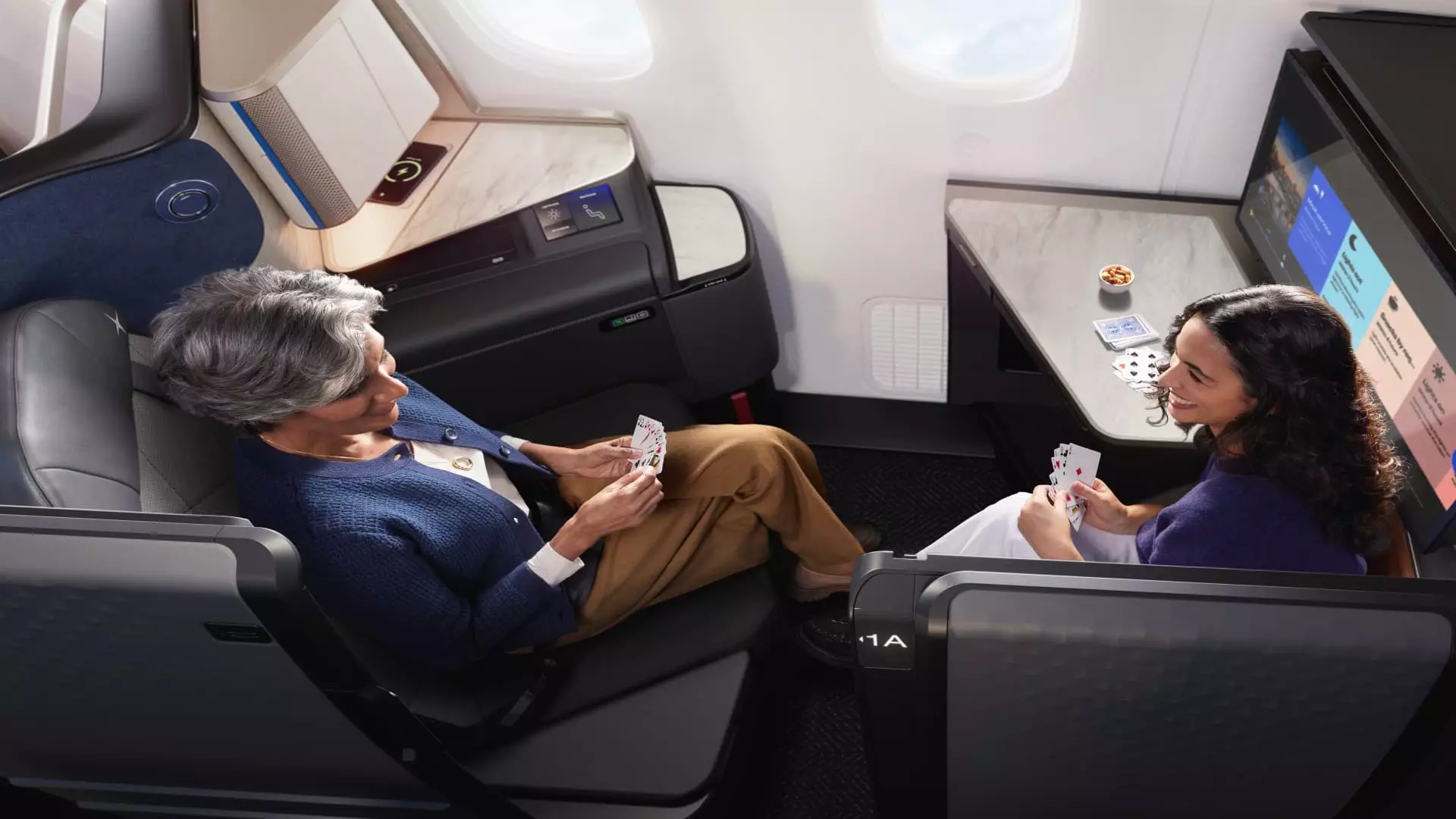As the dust of economic uncertainty settles in various sectors, U.S. airlines are engaging in an unprecedented arms race to claim dominance in the international business-class market. With every competing airline now offering plush suites and exclusive amenities such as sliding doors, Bang & Olufsen headphones, and gourmet meal options, one must ask: who truly benefits from such lavish spending? The upgrades advertised are nothing short of extravagant, and they may very well end up alienating the average traveler, turning the skies into an elitist playground.
American Airlines, for instance, has unveiled its latest business-class offering with thrilling features like a “trinket tray” and a wireless charging pad, all under the guise of enhancing passenger experience. Meanwhile, United Airlines is aiming to top this with its Polaris Studios, complete with larger suites and 27-inch 4K screens. But as airlines consciously choose to elevate their premium offerings, a significant gap opens between those who can afford a plush seat and the masses who cannot.
The Cost of Luxury Flights
To illustrate the absurdity of this competition, consider the pricing: a business-class ticket on American Airlines can soar to $5,747 for a mere trip from Philadelphia to London. In contrast, a coach ticket is priced at just $867. This disparity raises critical concerns about the direction in which commercial air travel is heading. Are we really okay with an industry that increasingly prioritizes the extravagant desires of a wealthy few?
The question becomes even more pressing when you look at the overall financial health of these airlines. Despite American’s paltry 2.1% pretax margin and the broader S&P 500’s healthy 12.8%, airlines are pouring billions into more luxurious cabins in a bid to enhance their perceived value to affluent clientele. This hyper-focus on luxury creates an unsustainable economic model based solely on catering to the wealthy traveler while sacrificing the comfort and even basic accessibility for the average passenger.
Economic Disparities in Air Travel
The gulf between the luxury and standard offerings highlights stark economic inequalities that are seemingly being ignored. Robert Mann, a well-versed aviation analyst, stated that the growing need for premium services is driven by negative experiences in economy class. Let’s face it—airlines need to wake up to the realities their most loyal customers are facing. When economy class experiences degrade to the point that flying coach feels like a form of punishment, the solution should not be to merely ramp up luxury options. Instead, airlines should strive to improve basic air travel standards across all classes.
Moreover, the marketing mentality that corporates prefer to purchase business-class tickets over first-class ones sheds light on a deeper issue in corporate culture. The implicit value of class decisions often underplays the necessity for improvement at the economy level. If businesses continue to view travel as a status symbol rather than a necessity, the average traveler will suffer a decline in quality means of travel, leaving only a yesteryear’s echo of accessibility behind.
Is Luxury Travel Worth the Hype?
Luxury should not be equated with better service or comfort. Yes, United Airlines has introduced an amuse-bouche of Ossetra caviar, and American Airlines rolls out plush bedding and noise-canceling headphones like they’re handing out candy. However, does this elite experience translate into more punctual flights or better treatment of passengers? The answer more often than not is no.
Instead, the overwhelming focus on upgrading luxuries can backfire, diluting the essence of air travel: connectivity and efficient transportation. With supplies snarled by the ongoing struggles in the global supply chain, these upgrades come at a steep price—both in dollars and overall organizational efficiency. If premium travel experiences halt aircraft delivery due to the obsession with luxury polish and appeal, the question remains: are we choosing innovation or indulgence?
Confronting a Haughty Aviation Culture
The superficial pursuit of an elite travel experience often breeds an aviation culture more disconnected from the realities of its consumers. While wealthier patrons have retained their demand for premium services—even in economic downturns—airlines seem to ignore demographic shifts and the middle-class plight. Just because some travelers are basking in wealth does not mean that consumer loyalty extends to elite lounges and luxury suites.
In this race for opulence, airlines have become architects of disenchantment, privatizing air travel into a type of elitism that can hardly be justified. It’s imperative that airlines reevaluate their focus and remember the basic tenets of service: accessibility and respect for all passengers, affluent or otherwise. The craft of flying should unite us rather than drive us apart, turning the privilege of air travel back into a public good rather than a niche for the wealthy.

